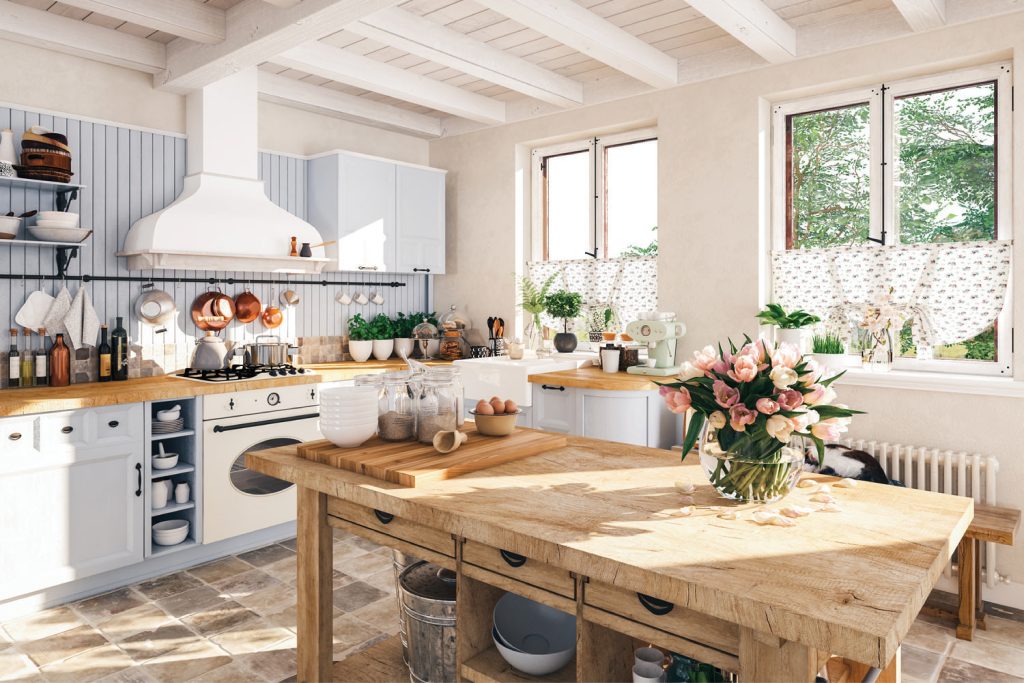Nothing says cozy like a cottage. For decades, people have been inspired by the charm of the English countryside and the traditional, yet lived-in, style of the homes found there. Embracing the design is the perfect way to live out your Jane Austen fantasy, no matter where you call home.
the hallmarks of english cottage
Since the Industrial Revolution, people have been inspired by the rural beauty of cottage living in the English countryside. This style idealizes the simplicity and comfort, while disconnecting from the hustle and bustle of urban living. The style is defined by warm colors, plush furniture and antiques everywhere.
- Antiqued or patinated pieces
- Toile and floral prints
- Functional spaces like mud and hobby rooms
- Slip covered and tufted furniture
- Formal but lived-in spaces
- A muted color palette with warm splashes of color
- Layers of texture
- Exposed structural elements
- Window shutters
how to introduce it in your home
English cottage style is all about adding charm to space through unassuming but dignified design. By picking the right elements, you can create your ideal cozy countryside interior—even if you live in the middle of a city.
- Add old world charm through antique pieces. These do not have to be grand statement elements. Much of cottagecore design is simple and homey.
- Repurpose older items. A trunk can become a side table or footboard for a bed, and old shutters can add some country whimsy as wall decor or a headboard.
- A farmhouse table is a must for any cottage-style home. Mismatched chairs also are a hallmark of the style. Rustic wooden seats, benches and high-back upholstered chairs can all be mixed to create a welcoming dining table.
- Thanks to its bucolic scenes, toile patterned wallpaper and upholstery is a staple of English Cottage interiors. You can add it anywhere: walls, furniture, even the ceiling is fair game.
- Display your collections, whether for everyday use or just for show. This can include elements like aprons, pots and glass canisters in a kitchen, or antique books, walking sticks and more in living spaces.
- Avoid the harsh lines of contemporary and modern design. Opt for plush and traditional furniture, and embrace adding layers of textile through elements like throws, pillows and curtains. Add clutter through art, collections and plants.
- English cottages were often working farms, so don’t be afraid to bring the style into functional spaces. Mudrooms, laundry rooms and crafting areas all can benefit from elements like woven baskets, painted cabinetry, patterned wallpaper or vintage jars.
